Removing engine sludge is a vital process to keep the engine running smoothly. It’s a regular car maintenance process that you can perform using plenty of sludge remover.
But if you don’t wish to investing in those items, you can still handle them manually. In this case, learning how to remove engine sludge by hand can be life saver.
This article will teach you how to remove engine sludge successfully by hand within a short time.
Plus, we include some symptoms of engine sludge so you can become aware quickly and take the right step as soon as possible.
What Is Engine Sludge?
Engine sludge is a gummy and dark material consisting of dirt, coolant, oil, soot, and water vapor. It blocks the engine oil pump.
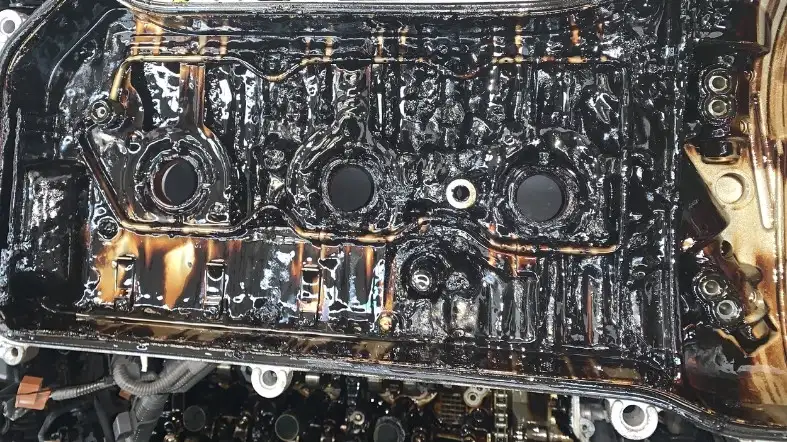
The two most common reasons for forming engine sludge are frequently using poor quality motor oil and avoiding the oil change schedule.
If you notice a small amount of engine sludge, then you can handle it in no time. Put the oil flush into the engine and run the engine.
Then leave the engine for around 5 minutes to become hot. Then turn the engine off and finally change the oil.
On the other hand, if there is a large amount of sludge, follow this manual method:
How to Remove Engine Sludge By Hand- 6 simple steps
If you ignore the engine oil change schedule throughout the year, you may need to deal with a huge amount of sludge.
If it has already formed, you have nothing to do except remove it. Though there are lots of engine sludge removers available, removing it by hand is also effective yet easier. The process is:
Collect The Things Require
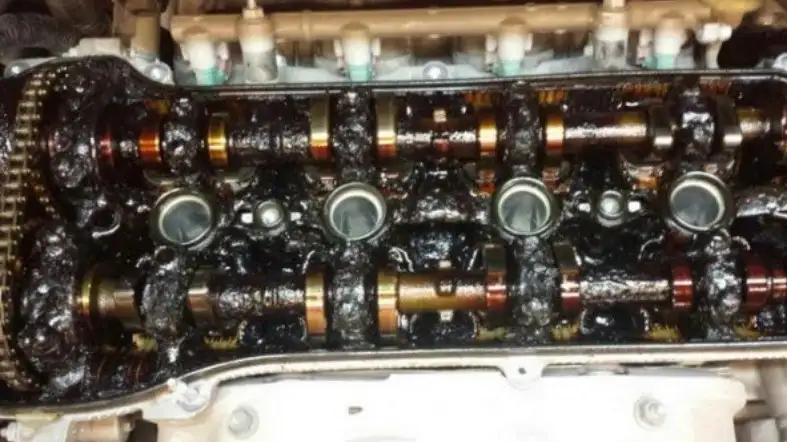
Having the essential tool will make the engine sludge removal task quite straightforward. For this process, you will require:
- An engine flush
- A new oil filter
- Brand new motor oil
- A filter wrench
- A container
Though a source of pressurized air isn’t compulsory, it will add an extra advantage.
Prepare the vehicle
Park the vehicle over a garage pit or on level ground. Though a garage pit is preferable, a level surface will be handy enough.
Block the back wheels of the vehicle with a heavy object so you can safely work under the engine.
Otherwise, the vehicle can start rolling and end up causing a huge accident. Thus, you must block the rear wheels.
Treat The Engine

The next step is to treat the engine with a new oil flush. To do so, unlock the hood of the car first. Then remove the engine oil cap and pour the whole engine flush inside your vehicle’s engine.
Replace the engine oil cap, close the hood, and leave the car for around 10 to 15 minutes.
Don’t drive the car, let it warm up. After pouring oil flush, it starts melting the engine sludge to flow out. Then you can easily flush the rest of the liquefied engine sludge mixed with dirty oil.
Turn off the engine to drain the dirty oil
If the engine becomes warm and the sludge liquefies, turn the engine off. Then drain the dirty mixture of oil flush and sludge.
To run out the dirty fluid, simply take away the drain plug from the oil pan. Collect the sludge in a container instead of letting it pour directly into the ground.
You can also use a pressurized air source to make the engine spotlessly clean.
To do so, put the hosepipe inside the oil filter and loosen the sludge using pressurized air. Along with applying force, the sludge will start coming out.
Install A New Oil Filter
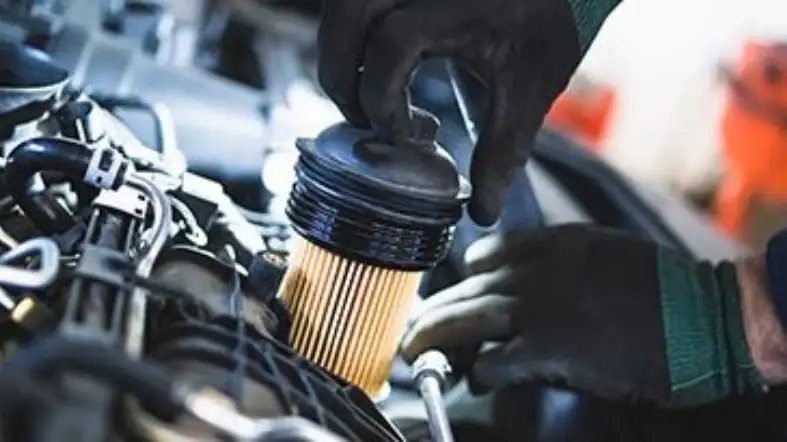
To loosen the old filter, use an oil filter wrench to drain out the residue.
Remove the dirty oil filter and replace it with a brand new one. Before installing it, add some clean oil to the gasket of the new oil filter.
Then install the oil filter by tightening it in the clockwise direction with your hand. Restore the drain plug to avoid pouring in the clean motor oil. You will insert it into the engine later.
Pour fresh oil into the engine
Collect the best quality motor oil to keep the engine clean. It will also prevent the formation of engine sludge. Pour the oil into the engine and check the level with the dipstick at the same time.
Keep the oil level in the middle instead of filling the engine completely.
Once done, fit the oil filter cap tightly by screwing it on. Last but not least, close the hood and your car is ready for efficient driving.
A Few Common Symptoms Of Engine Oil Sludge
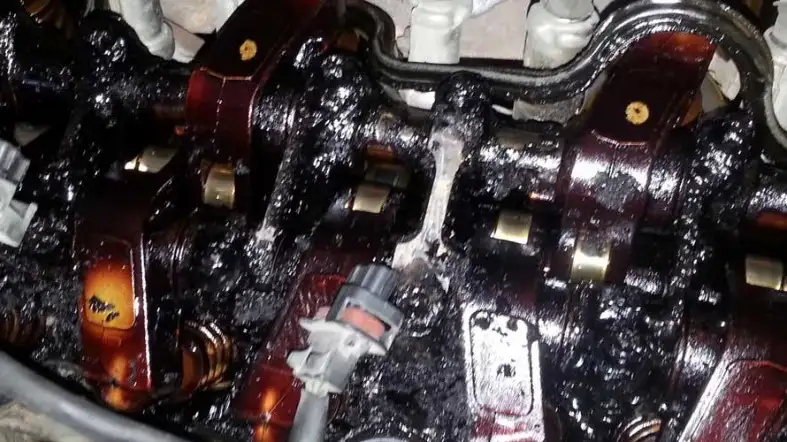
There is no alarm set up in the car that will make me aware of sludge. If you notice any of these symptoms, it means your car is causing engine sludge buildup.
A noisy tappet
If sludge forms in the engine, it doesn’t let the tappet work accurately. Instead, the tappet starts producing a ticking or clicking noise as it is forced to run.
A large amount of sludge built up can also encourage hydraulic jacks to make the same trick or click sound.
Sludge blocks the oil path and creates friction between metal components while coming out as noise.
The engine light will come on
Engine sludge greatly impacts the speed of the car that circulates the motor oil. It reduces the oil pressure and turns the engine light on.
In this case, the engine components can fail due to a lack of subsequent friction and adequate lubrication.
Even so, it can end up causing the engine to malfunction, particularly if the oil doesn’t enter the cylinder head.
Dirty Oil Filter
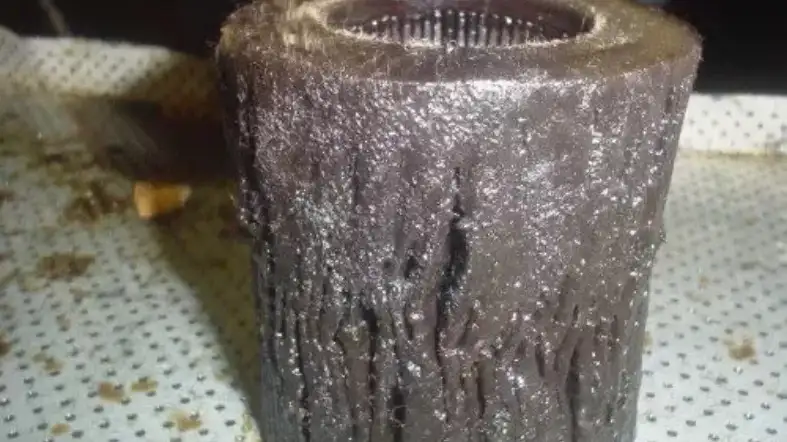
The sludge can also make the oil filter murky and grimy. A dirty filter reduces the oil pressure and impacts circulation.
Malfunctioning O2 Sensor
The most likely cause of the 02 sensors not working accurately is sludge buildup. If the malfunctioning O2 sensor occurs, it can lead to the engine misfiring and end up with low fuel efficiency.
How to prevent sludge from building in the engine?
These simple tips will help prevent the creation of sludge inside the engine:
- Change the engine oil regularly.
- Install the best oil filter and use high-quality motor oil when changing the oil.
- Don’t drive in stop-and-go motion.
- If your car has a diesel engine, maintain the integrity of the fuel system constantly.
FAQs
What Would Happen If You Didn’t Remove The Engine Sludge?
If the sludge keeps accumulating in the engine for a long time, it will clog up the oil pump. As a result, the oil won’t circulate at the right pressure and speed.
Even though the sludge build-up prevents most of the engine parts from receiving adequate oil, the lack of lubrication will cause friction.
Lastly, the friction will wear down the metal components and cost you an expensive repair.
Is It Safe To Remove Engine Sludge By Hand?
Removing engine sludge by hand doesn’t mean you will touch the sludge with your bare hand.
If you remove the drain plug in the oil pan, the sludge will automatically come out, and pressurized air will help you remove the sticking sludge.
So the manual process of removing engine sludge is completely safe. All you need is slight confidence, a few minutes, and the right process.
Final words
Ignoring engine sludge for a long time brings plenty of severe issues, and you are aware of a key part of them.
Once you have learned how to remove engine sludge by hand, you can successfully avoid those difficulties.
More importantly, removing engine sludge by hand is a much easier process than you can practice in your home garage to keep the car’s engine in optimum condition.
Hope you find the method handy and are confident enough to perform it.
